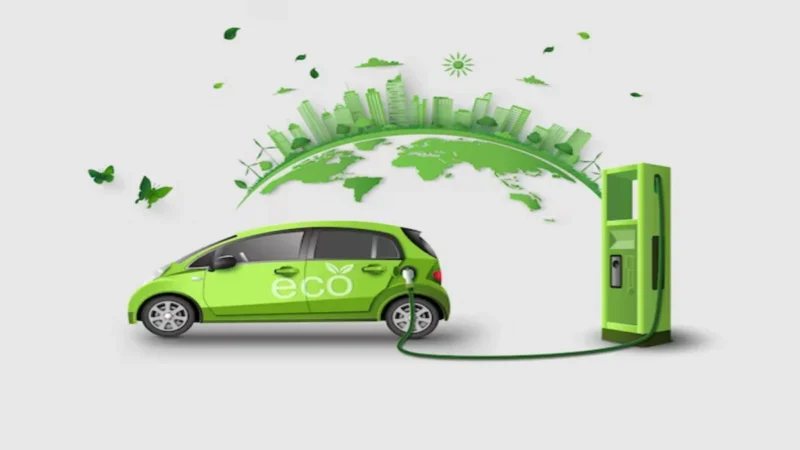How Aviation Achieves Speed and Sustainability Together?

Aviation has undergone remarkable transformations over the years, advancing in both speed and sustainability. These two seemingly opposing goals, speed, and sustainability, have become focal points of innovation in the aviation industry. As air travel continues to play a pivotal role in connecting people and goods across the globe, the need to balance speed and sustainability has never been more critical.
The Need for Speed in Aviation
Speed has been a fundamental goal in aviation since the Wright brothers’ historic flight in 1903. Faster aircraft offer numerous advantages, such as reduced travel time, increased passenger capacity, and improved competitiveness in the airline industry. Speed in aviation is not solely about passenger convenience; it also has economic and environmental implications.
Reduced travel time not only benefits passengers but also has a significant impact on the aviation industry’s bottom line. Airlines can operate more flights with the same aircraft, resulting in higher revenue potential. Furthermore, shorter flight durations translate into reduced fuel consumption, which is a key factor in aviation’s sustainability efforts. Faster aircraft can achieve their destinations more quickly, leading to decreased emissions per passenger-mile.
Sustainable Aviation: The Need of the Hour
In recent years, the aviation industry has faced growing pressure to address its environmental footprint. The carbon emissions from aviation contribute to climate change, and airlines have a responsibility to minimize their impact. Sustainability in aviation encompasses a wide range of strategies and technologies aimed at reducing the environmental impact of air travel. These include more fuel-efficient engines, alternative fuels, and improvements in air traffic management to minimize congestion and reduce emissions.
Finding the Balance
The challenge for the aviation industry is to strike a balance between speed and sustainability. Achieving this balance is crucial not only for addressing environmental concerns but also for ensuring the long-term viability of the industry. Here are some of the ways aviation is achieving speed and sustainability together:
1. Fuel-Efficient Aircraft
Modern aircraft are designed with fuel efficiency in mind. Advanced aerodynamics, lightweight materials, and state-of-the-art engines all contribute to reducing fuel consumption. High-bypass turbofan engines, for example, are quieter and more fuel-efficient, making them a common choice for modern aircraft.
2. Alternative Fuels
The aviation industry is exploring alternative fuels, such as biofuels and hydrogen, to reduce its dependence on traditional jet fuels. These alternative fuels have the potential to lower greenhouse gas emissions and promote sustainability. Airlines are increasingly incorporating these fuels into their operations.
3. Aerodynamic Improvements
Aerodynamics play a crucial role in the speed and efficiency of an aircraft. Ongoing research and development focus on optimizing wing designs, reducing drag, and improving lift. These enhancements not only boost an aircraft’s speed but also reduce its fuel consumption, aligning with sustainability goals.
4. Advanced Air Traffic Management
Efficient air traffic management systems can reduce congestion and minimize the time aircraft spend idling on the ground or in the air. New technologies, such as satellite-based navigation and data-sharing platforms, enable more precise routing, reducing fuel burn and emissions.
5. Electric and Hybrid Aircraft
Electric and hybrid aircraft represent a promising avenue for sustainable aviation. These aircraft produce significantly fewer emissions and noise pollution compared to traditional jet engines. While they may not yet match the speed of conventional aircraft, ongoing research and development aim to bridge this gap.
6. Sustainable Airport Operations
Airports are also making sustainability efforts. They are implementing energy-efficient infrastructure, electrifying ground support equipment, and utilizing renewable energy sources to reduce their carbon footprint. Sustainable airport operations contribute to the overall sustainability of air travel.
The Future of Speed and Sustainability in Aviation
The aviation industry’s journey towards achieving speed and sustainability together is an ongoing process. While speed remains a primary goal for air travel, it is no longer at the expense of sustainability. Airlines, manufacturers, and regulatory bodies continue to collaborate to find innovative solutions that can reduce the environmental impact of flying without compromising on speed.
The future of aviation may see a convergence of supersonic and hypersonic travel with sustainable aviation technologies. Supersonic and hypersonic aircraft, while incredibly fast, have traditionally been associated with high fuel consumption and emissions. However, ongoing research aims to develop sustainable propulsion systems for these high-speed aircraft, making them more environmentally friendly.
Key Takeaways
Aviation is no longer a trade-off between speed and sustainability. The industry recognizes the need to balance these goals, and it is making significant strides in achieving both. From fuel-efficient aircraft and alternative fuels to advanced air traffic management and sustainable airport operations, the aviation sector is committed to minimizing its environmental impact while providing fast and efficient air travel. As technology continues to advance, the future of aviation holds the promise of even greater speed and sustainability, ensuring that air travel remains a vital and responsible mode of transportation in the years to come.


